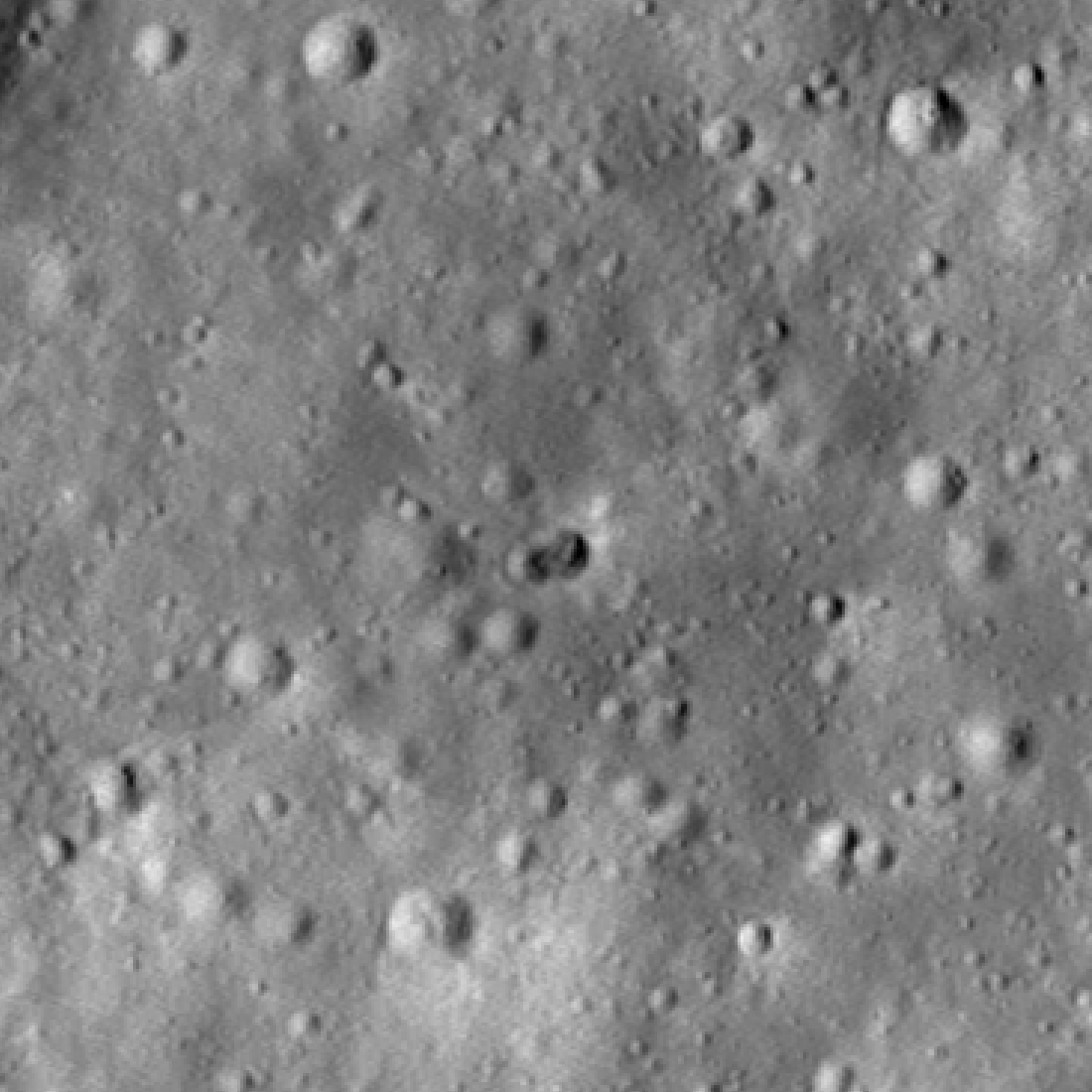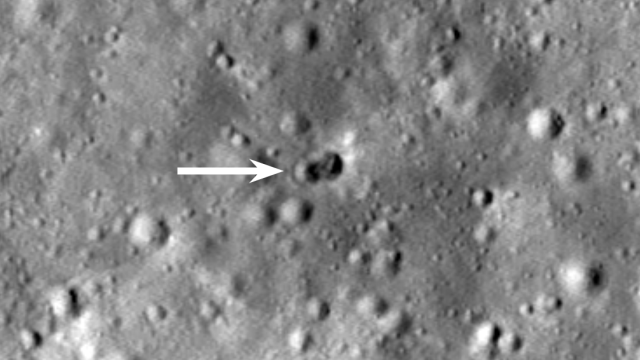Observations made by NASA’s Lunar Reconnaissance Orbiter have allowed scientists to identify the spot where a mystery object — likely a discarded rocket body — smashed into the Moon several months ago.
The crash site is located near Hertzsprung Crater on the far side of the Moon, which is exactly where astronomers thought it might be. Before-and-after images gathered by the Lunar Reconnaissance Orbiter (LRO) allowed scientists to spot two newly formed craters generated by the impact, which happened on March 4, according to a NASA press release. That two craters were formed from an apparent single object is now a question in need of an answer.

Confusion still exists as to the origin of the forlorn chunk of space junk. It was initially believed to be the upper stage of a discarded Falcon 9 rocket that SpaceX launched in 2015, but further analysis pointed to a remnant of China’s Chang’e 5-T1 lunar mission from 2014. Trouble is, Chinese officials have adamantly denied that the object belongs to them. Speaking to Inside Outer Space in February, Bill Grey, creator of Project Pluto, a software program for scanning solar system objects, said: “There really is no good reason at this point to think the object is anything other than the Chang’e 5-T1 booster” and anyone “claiming otherwise has a pretty large hill of evidence to overcome.”
Regardless, it seems to be the first time that a piece of space junk has inadvertently slammed into the lunar surface. Our stuff has smashed into the Moon before, but those incidents were either intentional or failed attempts at lunar landings.
Prior to the impact, NASA said LRO wouldn’t be in a position to observe the impact, but that the orbiter would be able to monitor environmental changes consistent with a crash site. NASA said the process could take weeks or even months to complete, which turned out to be the case, as the impact happened around four months ago.
In an email, Jonathan McDowell, an astrophysicist at the Harvard-Smithsonian Centre for Astrophysics, said the crash site is “moderately close to the predicted impact point.” For you lunar cartographers out there, the predicted spot was 33.55E 5.18N, while the actual location turned out to be 234.49E 5.23N. “Newton wins again,” McDowell quipped.
The impact has unexpectedly formed two craters: an eastern crater measuring 18 metres wide and a partially overlaid western crater measuring 16 metres across. The combined largest width of the crater is 28 metres. As to the cause of the double crater, here’s what NASA had to say:
The double crater was unexpected and may indicate that the rocket body had large masses at each end. Typically a spent rocket has mass concentrated at the motor end; the rest of the rocket stage mainly consists of an empty fuel tank. Since the origin of the rocket body remains uncertain, the double nature of the crater may help to indicate its identity.
McDowell disagreed with this assessment, writing in his email that it “could just be that it came in at an unusual angle with a bounce,” but he was clear to point out: “I’m not a cratering expert.”
Interestingly, this is the first documented case of an artificial object forming a double crater (double craters are a common fixture of asteroid impacts, as they often travel — and subsequently crash — in pairs). During the Apollo missions, the third stage of Saturn V rockets and second stage of Saturn IB launch vehicles (collectively known as S-IVB) were deliberately crashed into the Moon, forming oddly shaped craters. Oddly shaped, but not double craters.

NASA’s explanation for the double crater seems plausible, but I’m not altogether convinced. These craters might actually be the result of two meteors striking the Moon’s surface, though I will admit that the odds of this happening at practically the same time and place as the projected impact of the mystery object does seem highly implausible. Hopefully scientists will identify the source of the space junk soon so that we can finally put this story to rest.
More: NASA Declares Megarocket Rehearsal Complete, Setting Stage for Inaugural Launch.
